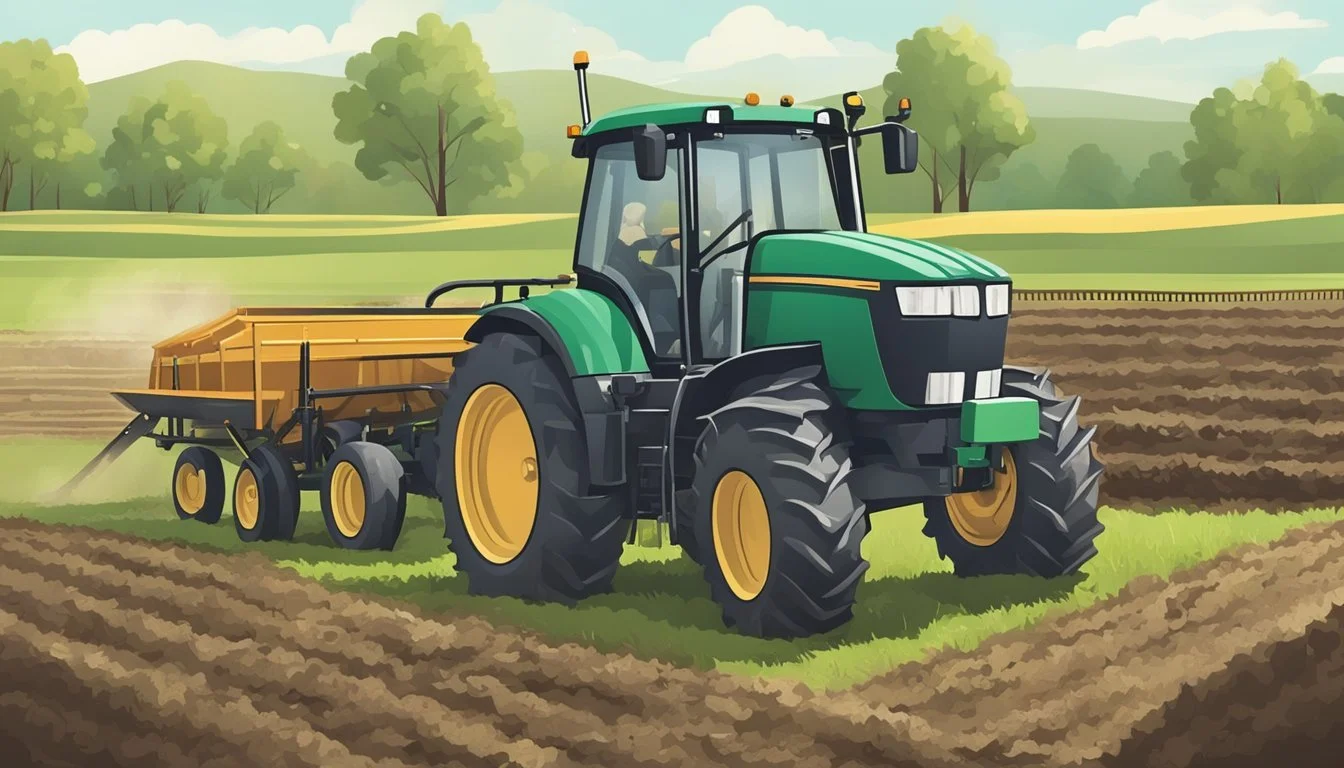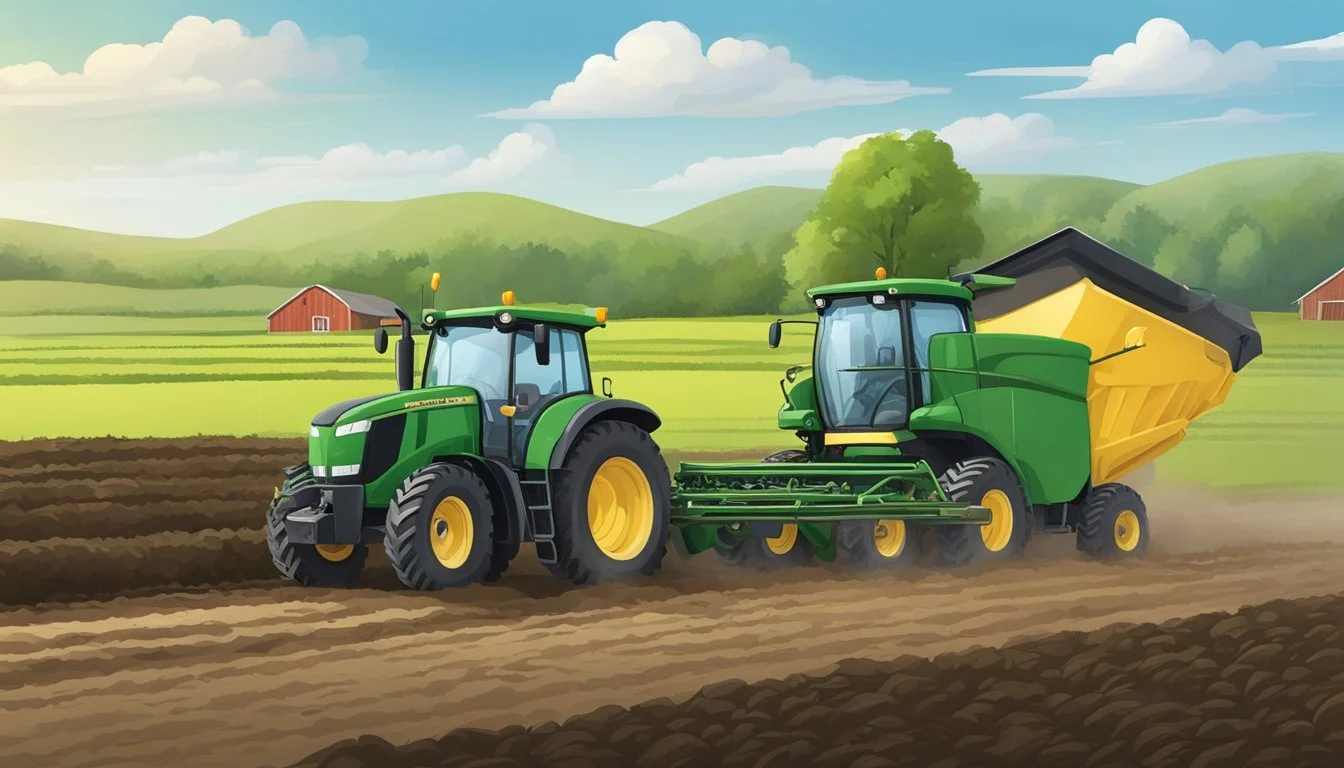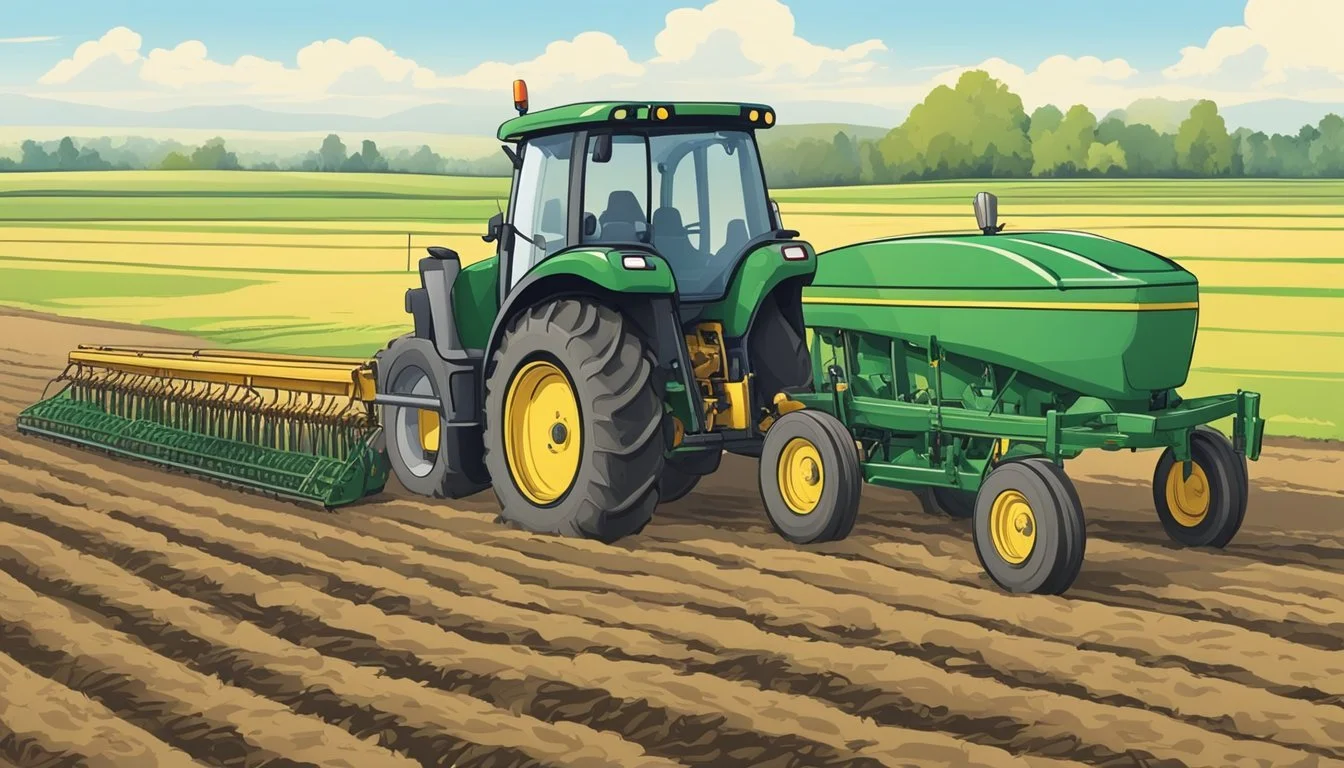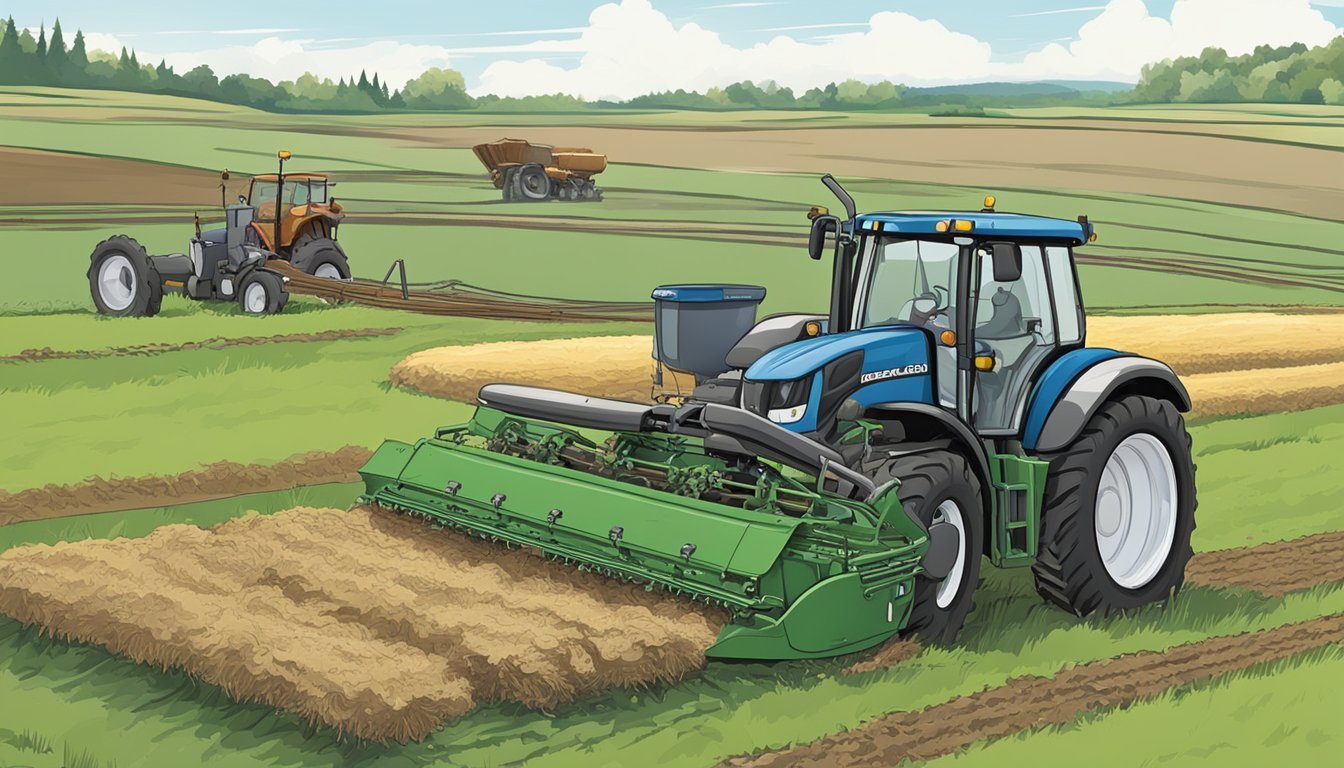The Ultimate Guide to Using a Pasture Drag
Streamline Your Homestead's Manure Management
Efficient manure management is critical when maintaining healthy pastures on a homestead. A pasture drag, an essential tool for this purpose, offers a straightforward solution to distribute manure evenly across the land. By breaking up and spreading manure piles, the drag promotes faster decomposition and nutrient return to the soil, enhancing grass health and ensuring the grassland can provide optimal grazing for livestock.
Regularly dragging a pasture may also play a role in controlling parasites, as the act of spreading out manure exposes parasite eggs to the elements, reducing their viability. This practice complements rotational grazing and other pasture management techniques, contributing to a more sustainable and productive homestead. It helps to transform what could be a waste management concern into a beneficial resource that supports the fertility of pasture ecosystems.
Strategic application and timing of dragging are paramount to maximize the benefits of this practice. For instance, scheduling dragging sessions during specific weather conditions can improve efficacy and avoid potential issues such as excessive moisture leading to clumping. Adhering to proper manure management through the use of a pasture drag not only supports the environmental integrity of the land but also contributes to the overall well-being of the animals that graze upon it.
Understanding Manure Management
Effective manure management is critical for maintaining soil fertility and promoting sustainable farming practices. It involves a range of techniques from stockpiling to composting, each contributing to soil health, nutrient management, and overall farm productivity.
The Role of Manure in Soil Fertility
Manure is a rich source of nutrients essential for plant growth, including nitrogen, phosphorus, and potassium. When applied to soil, it improves soil structure, increases organic matter, and enhances the soil’s water-holding capacity. Sustainable farming leverages manure as a natural fertilizer, minimizing reliance on chemical alternatives.
Benefits of Efficient Manure Management
Soil Health: Regular incorporation of manure boosts beneficial microbial activity, aiding in nutrient cycling and promoting robust plant growth.
Nutrient Management: Efficient use of manure ensures optimal nutrient availability for crops while reducing the risk of runoff into water bodies.
Pest and Disease Control: Proper manure management helps control parasites and flies by destroying viable eggs and larvae, and can reduce the spread of weed seeds.
Environmental Protection: By reducing chemical fertilizer use and controlling runoff, well-managed manure preserves surrounding ecosystems.
Potential Challenges in Manure Management
Stockpiling: Without proper planning, stockpiled manure can leach nutrients and lead to environmental pollution.
Composting: While composting stabilizes nutrients and kills pathogens, it requires careful monitoring of temperature and moisture levels.
Timing and Application: It is crucial to apply manure when plants can best utilize the nutrients, and to avoid times when rain can wash nutrients away.
Parasite Reinfestation: Uneven distribution of manure may lead to areas of concentrated parasite and fly populations, posing a risk to livestock.
Tools and Equipment for Managing Manure
The efficiency of manure management in pastures hinges on the correct use of specialized tools and equipment, ensuring nutrient distribution and maintaining healthy soil conditions.
Introduction to Pasture Drags and Harrows
Pasture drags and chain harrows are essential for breaking up and evenly distributing manure in a pasture. Pasture drag designs vary, but they generally consist of a metal frame with tines or chains that rake over the soil. By regularly harrowing the pasture, these drags not only help scatter manure, but also aerate the soil, enhancing the ecosystem for beneficial microorganisms.
Types of Drags:
Traditional chain harrows
Multi-action drags with adjustable tines
Heavy-duty drags for larger areas
Harrowing Benefits:
Spreading manure to prevent nutrient overload in one area
Soil aeration for improved water infiltration and root growth
Assistance in composting in-situ by exposing manure to the elements
Other Manure Management Tools
Aside from pasture drags, several other tools are vital for comprehensive manure management:
Manure Spreader: A mechanized piece of equipment that uniformly distributes manure over the pasture. It efficiently turns waste into fertilizer and can be adjusted for different spreading rates.
Equipment
Manure spreader
Function
Evenly distributes manure over a field
Mowing Equipment: Regular mowing prevents the overgrowth of weeds, improving pasture quality and ensuring better manure distribution.
Equipment
Mower
Function
Cuts down tall grass for even spreading of manure
Using these tools, in conjunction with effective pasture management strategies like rotational grazing, facilitates a sustainable manure management system.
Steps for Using a Pasture Drag Properly
Efficient manure management on a homestead involves using a pasture drag systematically. These steps ensure an even distribution of manure, which is vital for soil health and pasture productivity.
Setting Up Your Pasture Drag
Before beginning, one must configure the drag properly. The design should be heavy enough to disperse compacted manure piles yet gentle enough not to harm the soil structure. It often includes a framework that can be weighted with logs or tires for added pressure. The attachment of a long pipe at the front can assist with stability, while incorporating some form of tines or teeth will help break up and spread dense manure piles.
The Process of Dragging Pastures
Drag the pastures at times when the soil is neither too wet nor too dry to prevent damage to both the soil and the drag. This usually means waiting for the ground to dry after rainfall. Begin by selecting an optimal route that covers the pasture evenly. Proceed with dragging, focusing on areas with heavy manure coverage as these can benefit the most from dispersion. During the dragging, ensure that manure is spread thinly across the pasture, which will expose it to sunlight and aid in its breakdown, thereby returning nutrients to the soil. It is recommended to drag a few times per year, adjusting the frequency based on the rate of manure accumulation and the intensity of grazing. After dragging, allow the pasture time for the breakdown of manure and absorption of nutrients before reintroducing livestock to graze. This practice contributes significantly to the health and sustainability of the grazing environment.
Integrating Pasture Drags into Overall Pasture Management
Incorporating pasture drags into a homestead's management plan can optimize nutrient distribution and maintain soil health. This integration enhances forage quality and supports effective grazing management.
Effective Grazing Management
Effective grazing management ensures that forage is used efficiently. One should consider the stocking rates, which dictate the number of animals per pasture area, and adjust these rates according to forage availability. Additionally, it is crucial to implement a rotational grazing system, where livestock are moved between pasture areas to prevent overgrazing and allow for regrowth.
Rotational Grazing Practices:
Rotate livestock to fresh sections of pasture regularly.
Allow for rest periods that let pastures recover.
Selective grazing, where livestock prefer certain grasses or areas, may lead to uneven manure distribution. Using a pasture drag can help in spreading manure evenly, which not only distributes nutrients uniformly but also prevents the buildup of parasite-laden areas.
Balancing Manure Distribution and Pasture Health
When incorporating the use of pasture drags, it is essential to balance manure distribution with the health of the pasture. Dragging helps break down and scatter manure piles, which:
Enhances the decomposition process.
Increases the contact between manure and soil, improving nutrient levels.
Dragging pastures can cover 80% to 100% of the pasture area, significantly impacting soil nutrient levels. However, it is important to drag pastures under the right conditions (such as when the pasture is dry) to avoid damaging the soil structure and to achieve the desired results in terms of manure decomposition and seedbed preparation.
Conditions for Effective Dragging:
Perform dragging when soil is relatively dry to prevent compaction.
Avoid dragging immediately before heavy rain to reduce nutrient run-off.
By attentively managing grazing patterns and the use of pasture drags, one can ensure that manure is a resource rather than a waste product, cultivating a thriving soil ecosystem for high-quality forage production.
Soil and Manure Analysis
Before implementing a pasture drag for manure management, understanding the soil's nutrient levels and the quality of the manure is crucial. Soil testing and manure analysis provide a scientific basis for efficient fertilizer application, ensuring that pastures remain productive and environmentally sound.
Conducting Soil Testing
The first step in pasture management is to conduct a soil test. This analysis reveals the levels of essential nutrients such as nitrogen, phosphorus, and potassium in the soil, as well as the soil pH, which affects nutrient availability. Here's how to proceed with soil testing:
Collect soil samples from various locations within the pasture to get an accurate representation.
Label and send samples to a certified laboratory for analysis.
Review the test results to understand the soil's nutrient profile and pH level.
Soil testing should be done every two to three years to monitor changes in soil fertility and adjust management practices accordingly.
Assessing Manure Quality
Manure provides valuable nutrients that can enhance soil fertility, but the nutrient content can vary widely. Assessing manure quality involves the following steps:
Collect manure samples during or close to the time of application to gauge their nutrient content accurately.
Analyze for content of primary nutrients: nitrogen (N), phosphorus (P), and potassium (K).
Consider additional testing for secondary nutrients and micronutrients depending on past soil test results and observed plant growth issues.
By analyzing both the soil and the manure, one can balance nutrient application to match crop needs, minimize the risk of environmental impact, and optimize the overall health and productivity of the pasture.
Advanced Techniques and Considerations
In ensuring effective manure management, it is essential to not only understand the basic operations of pasture dragging but to also incorporate more nuanced strategies that enhance the process.
Seasonal Considerations for Pasture Dragging
Spring: Focus on promoting germination and growth. Dragging during this season helps to distribute manure evenly, which can act as a natural fertilizer. However, be mindful of wet weather and mud, which can complicate the process. Allow pastures to dry sufficiently to prevent damage to the grass and soil structure.
Optimal Timing: Drag when the soil is neither too wet nor too dry.
Equipment Adjustment: Use lighter drags to avoid damaging young growth.
Growth Promotion: Helps in spreading seeds and nutrients for strong early growth.
Summer: This is the time for active management to maintain pasture health during peak growing months. Dragging can help to minimize pests and facilitate nutrient management.
Parasite Control: By breaking up manure, you also disrupt the lifecycle of parasites.
Soil Health: Regular dragging improves soil aeration and the breakdown of organic material.
Fall: Prepare for winter by focusing on stockpiling and silage preparation. Drag pastures to evenly distribute manure, providing a uniform layer of nutrients.
Pre-Winter Prep: Helps to integrate manure into soil before the ground freezes.
Stockpiling: Supports nutrient reserves for use in early spring.
Winter: Generally not advisable due to frozen ground, but if conditions permit, dragging can minimize compaction from winter traffic.
Manure Management Planning
Developing a comprehensive manure management plan involves timing applications with plant nutrient needs and growth cycles. Use the following strategies:
Nutrient Analysis: Test soil and manure to match application rates with plant needs.
Extension Educator Consultation: Work with local agricultural extension services to tailor your plan to local conditions and regulations.
Record-Keeping: Maintain logs of:
Dates and conditions when dragging occurs
Effects on pasture health and soil quality
Equipment Maintenance: Regularly inspect and maintain dragging equipment to ensure efficiency and prevent damage to pastures.
Incorporating these advanced techniques and considerations into your pasture management regimen will facilitate an efficient and ecologically responsible manure management system.
Impact on Environmental Sustainability
Using a pasture drag for managing manure on a homestead can significantly enhance environmental sustainability. This technique leads to better nutrient distribution and improved soil health, ultimately contributing to a more sustainable farming system.
Reducing Runoff and Protecting Waterways
Nutrient Runoff Minimization: Dragging pastures can help decrease the amount of manure runoff entering local waterways. Unevenly distributed manure is prone to being washed away during heavy rains, which can lead to nutrient-rich runoff. This runoff may contribute to problems like eutrophication of water bodies, harming aquatic ecosystems.
Enhanced Filtration: Regularly dragged pastures allow for manure to better integrate with the soil, which acts as a natural filter. This integration reduces the risk of contaminants entering water systems as the soil effectively absorbs and breaks down the nutrients.
Promoting Soil Carbon Sequestration
Increasing Soil Organic Matter: Incorporating manure into the soil increases the soil's organic content. This augmented organic matter is crucial for soil structure, moisture retention, and fertility. Higher organic content in the soil also means improved soil health and increased capacity to sequester carbon, thereby reducing greenhouse gas concentrations in the atmosphere.
Promoting Aerobic Breakdown: By spreading out the manure, a pasture drag ensures that more manure is exposed to oxygen. Aerobic decomposition of the manure not only minimizes methane emissions—a potent greenhouse gas—but also contributes beneficial nutrients to the soil, enhancing its overall fertility and structure.
Parasite and Pest Control
Effective manure management through pasture dragging is crucial for controlling parasites and reducing pest populations that impact livestock health. A consistent regimen can prevent parasites from developing to a stage where they can infect grazing animals.
Benefits of Pasture Dragging for Parasite Control
Dragging pastures is a practice that spreads and breaks down horse manure. This serves two primary functions regarding parasite control:
Exposure to Elements: Dispersed manure exposes parasite eggs and larvae to the sun and air, which can help dehydrate and kill them, reducing the risk of horses ingesting infective parasites while grazing.
Interrupts Life Cycles: Regular dragging disrupts the life cycles of parasites. Since parasites often rely on stable conditions to thrive, spreading the manure makes it less likely for parasites to successfully mature and infest the pasture.
Pasture dragging can be especially effective when combined with proper grazing management, such as rotating pastures or resting them to allow time for parasite die-off before livestock return to graze.
Mitigating Fly and Pest Populations
Managing manure by dragging pastures also helps minimize fly and pest populations in two ways:
Manure Breakdown: As dragging pastures speeds up the drying and breakdown of horse manure, it leaves flies with fewer breeding grounds. Consequently, this can lead to a decrease in fly populations in and around the pasture.
Interrupted Breeding: Consistent dragging alters the manure environment to the detriment of fly larvae. By breaking up and spreading out manure, fly larvae are more exposed to predators and less likely to reach maturity.
Maintaining this practice as a part of routine pasture management can significantly reduce the number of flies bothering horses and livestock, contributing to better overall health and comfort for the animals.
Conclusion
Implementing an efficient pasture drag system can profoundly impact homestead manure management. Farmers and homesteaders consistently aim to optimize pasture health, and incorporating a drag regimen is a strategic approach. Dragging pastures not only distributes manure evenly but also disrupts the breeding grounds of parasites, inherently aiding in pest control.
A comprehensive manure management plan should include regular pasture dragging to ensure nutrient-rich soil and improved grass growth. By breaking up and spreading manure, soil contact is increased, which can lead to a reduction in the hotspot nutrient loading near gates or feeding areas. It's advisable to drag during periods that allow the manure to decompose effectively, such as the fall season.
Key Benefits of Pasture Dragging:
Even distribution of manure, increasing soil fertility
Elimination of parasite breeding grounds through exposure to the sun
Improved pasture condition and forage quality
Important Considerations:
Drag pastures during dry periods to avoid compaction
Rotate dragging days to promote uniform coverage
Observe local regulations regarding manure management
Through diligent pasture management that incorporates effective dragging techniques, farmers can attain a sustainable grazing system. This practice supports high-quality forage production, ultimately yielding benefits for both livestock and the homestead's overall ecosystem. Therefore, integrating a routine pasture drag can be a pivotal aspect of successful farming operations.






